Friday, 16th of September 2016, saw the official unveiling of the RAAF Museum’s newest ‘aircraft’. A fiberglass Supermarine Spitfire MK VIII LF A58-492.
The idea for this display was born some three years ago and today members from 79 Squadron, their families, RAAF Officials and invited guests were present for the ceremony. MC for the event, OPSO SQNLDR Glen Coy CSC, welcomed the guests including the Chief of the Air Force Air Marshal Leo Davies. The Air Marshal’s speech highlighted and thanked those who were involved in the new display. The Friend’s of the RAAF Museum (represented by Mr Howard Franks) alongside corporate donors including Rolls Royce, represented by Mr Lee Doherty MBE (Senior Vice President Asia Pacific Region Rolls Royce), the RAAF Association and a host of other smaller donors, came together to see this project to completion.

From Left to Right – Rolls Royce, Mr Lee Doherty MBE, Chief of the Air Force Air Marshal Leo Davies, and the RAAF Museum’s Director David Gardner, stand proudly with the replica Spitfire.
The replica which was constructed in the United Kingdom by Gateguards, who have produced a full size replica weighing 1500 Kilograms and made to withstand the harsh Australian weather.
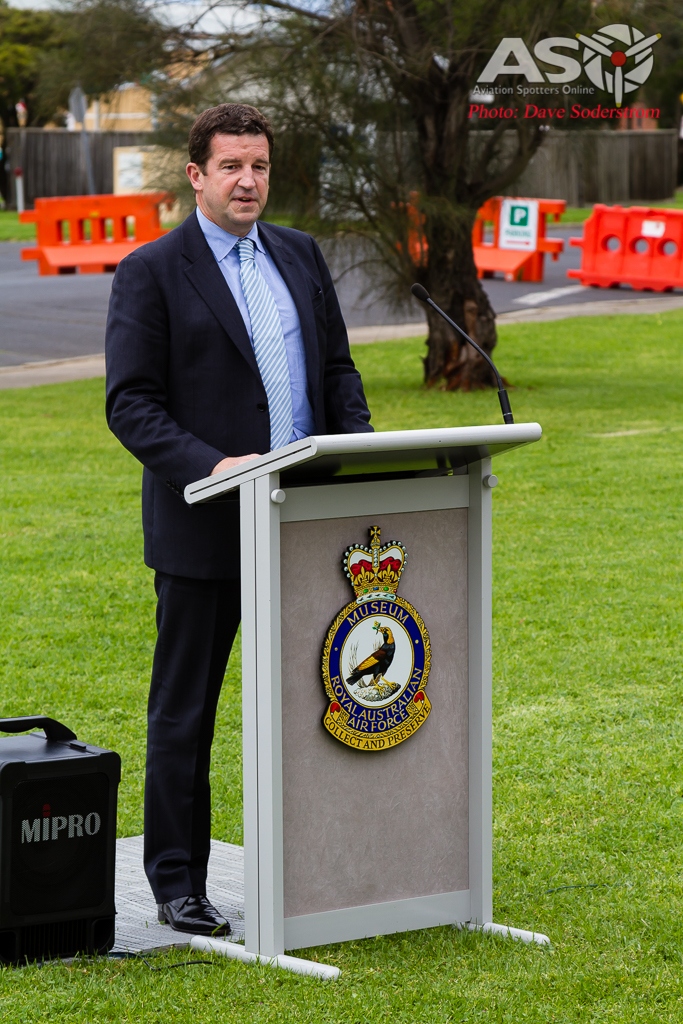
Mr Lee Doherty MBE (Senior Vice President Asia Pacific Region Rolls Royce) highlighted Rolls Royce’s close relationship and history with the RAAF and the RAAF Museum.
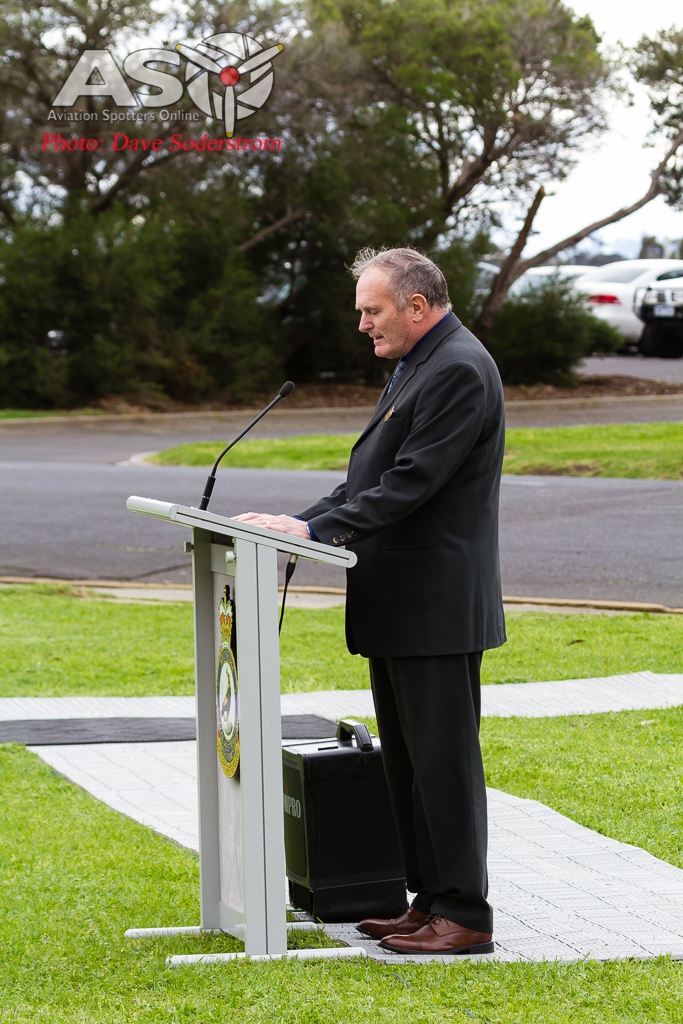
Mr Howard Frank President of the Friends of the RAAF Museum, recounts the real aircrafts history and 79 Squadrons history.
79 Squadron formed at Wooloomanata, Victoria, on 26 April 1943. Two months later the Squadron was soon deployed to Goodenough Island Papua New Guinea flying the Supermarine Spitfire Mk.VIII in both the Low Flying (LF) and High Flying (HF) versions. Missions that were conducted included fighter sweeps and bomber escorts for the remainder of the year, recording three confirmed enemy ‘kills. The squadron was plagued with many operational issue relating to the Spitfire, and suffered many losses of both man and machine. Operations were continued there until January 1945, where the Squadron was moved south to Darwin. Action didn’t cease however, a month later on the island of Morotai they were back in action against the Japanese. After Japan’s surrender the Squadron moved to Queensland where it disbanded on 12 November 1945.
The Squadron was reformed in 1962, No 79 Squadron was sent to war in Ubon, Thailand, as part of Australia’s commitment to the Vietnam War. It was expected for there to be a invasion of Thailand by North Vietnamese forces. This was never to eventuate, however the Squadron’s CAC Sabres were kept on a constant state of readiness and fully armed, for five years.
Again the Squadron was disbanded after the war, and after a hiatus some 18 years (1986), was reformed to fly the then current front line fighter, the GAF built Mirage IIIO. The Squadron was then based at RAAF Butterworth in Malaysia. On the 30th June 1988 the Squadron was once again disbanded, this also marking the end of the RAAF’s presence in Malaysia.
1998 came and 79 Squadron was once again reactivated this time located at RAAF Base Pearce, WA. The Squadron was formed to operate the Australian built Aermacchi MB-326H or ‘Macchi’ which was soon replaced by the BAE Hawk 127 in the year 2000. Today the Squadron is responsible for the Introductory Fast Jet Flying for RAAF pilots selected from No 2 Flying Training School, other task include Hawk refresher and Instructor Conversion Courses, Fleet support to Navy Operations, and Close Air Support.
The ceremony opened with two BAe Hawk 127s A27-10 and A27-33 deployed form RAAF Pearce to conduct a fly over the Spitfire replica. The two jets were an impressive sight as they passed overhead.
The Temora Aviation Museum provided a real treat for the invited guests. The museum’s Mk.VIII Spitfire VH-HET one of two operational Spitfires in the collection was present. The aircraft is painted as the personal mount of Royal Australian Air Force, Wg. Cdr Bobby Gibbes of 80 Wing RAAF 457 Squadron, based on Morotai in 1945. The aircraft serial number is A58-758 however it is marked as A58-602. Flown down from Temora and displayed for the ceremony attendees by ex RAAF F/A-18 Hornet pilot and current Red Bull Air Race pilot Matt Hall.
Matt gave a spirited display over the ceremony with the amazing song playing from the Rolls Royce Merlin engine heard across the base. Once the display was finished Matt joined the invited guests in the Mess Hall for Morning Tea.
Matt was kind enough to be available to answer questions and pose for photos while at Point Cook. As the afternoon rolled on the Spitfire was prepared for departure. Some of Temora’s crew including Kenny Love (Chief Executive), Peter Harper (Marketing Manager & WH&S Facilitator) and Brenden Maxwell (Apprentice Aircraft Maintenance Engineer) were on hand to see the departure of Matt and the Spitfire.
So, if you are in the Point Cook area, there’s yet another reason to stop by the RAAF Museum and wander though the exhibits and take in some unique Australian aviation history.
With thanks to Point Cook, RAAF Media, Temora Aviation Museum and Matt Hall for the opportunity to cover this significant occasion.
Dave Soderstrom.





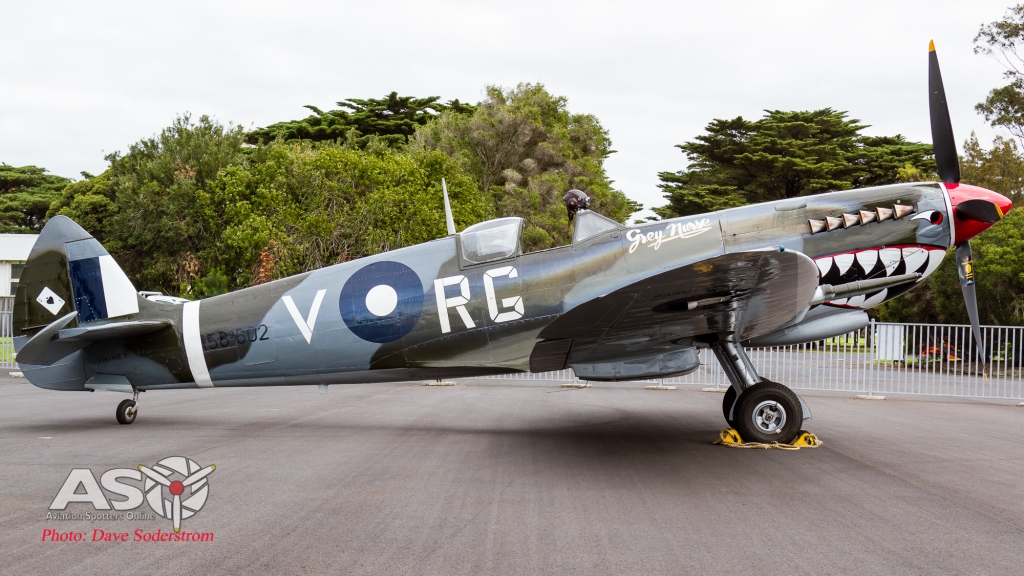
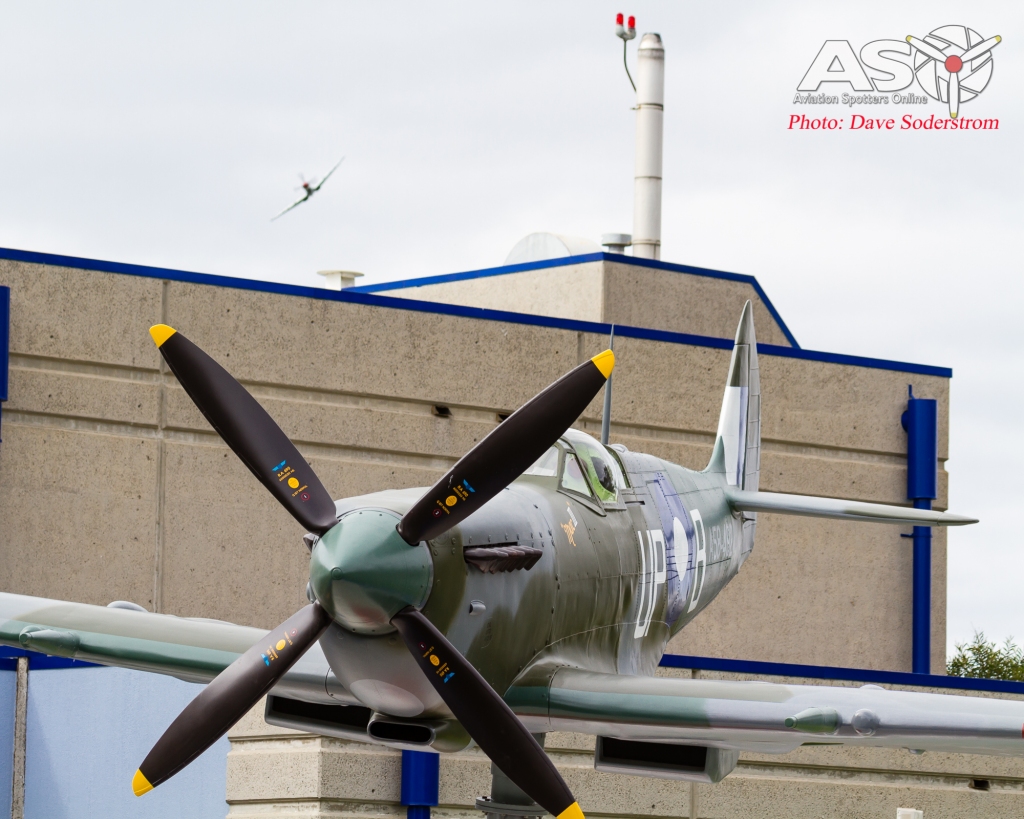

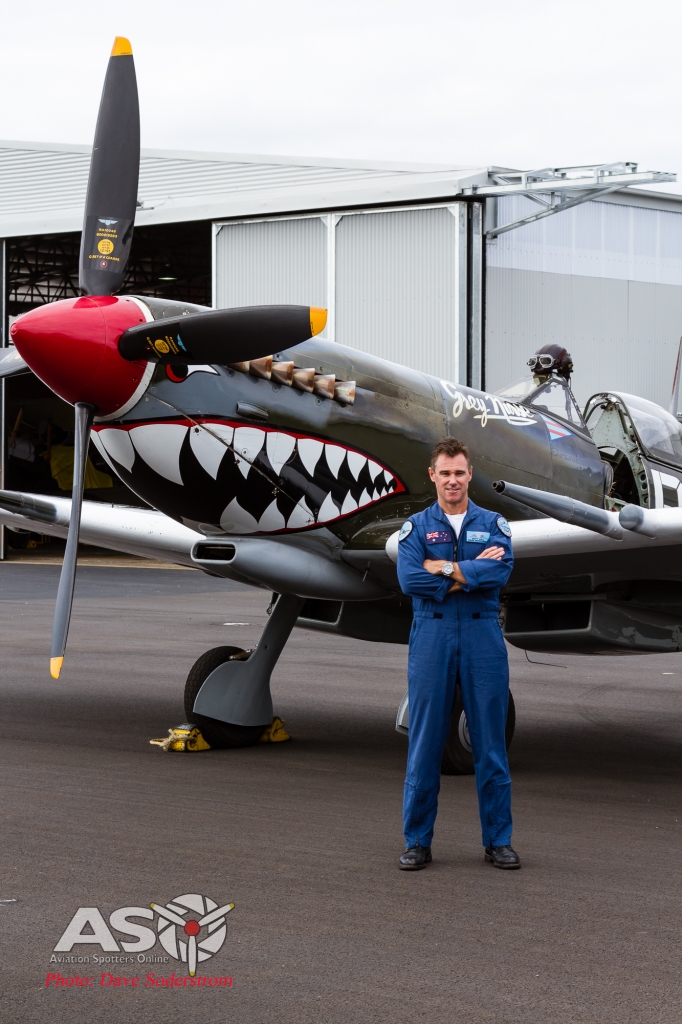
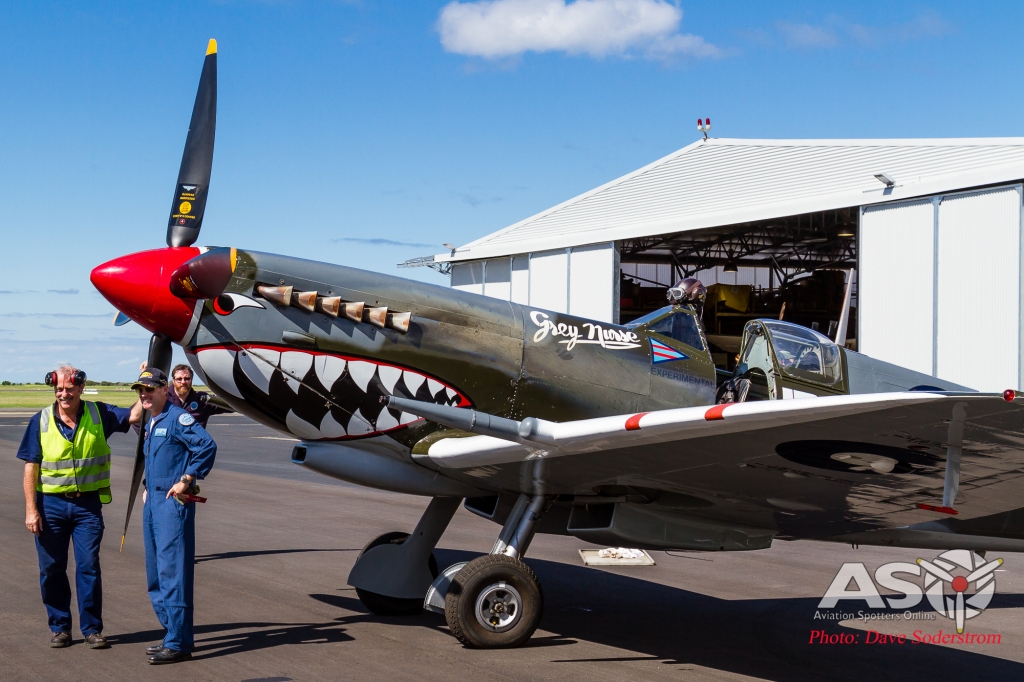
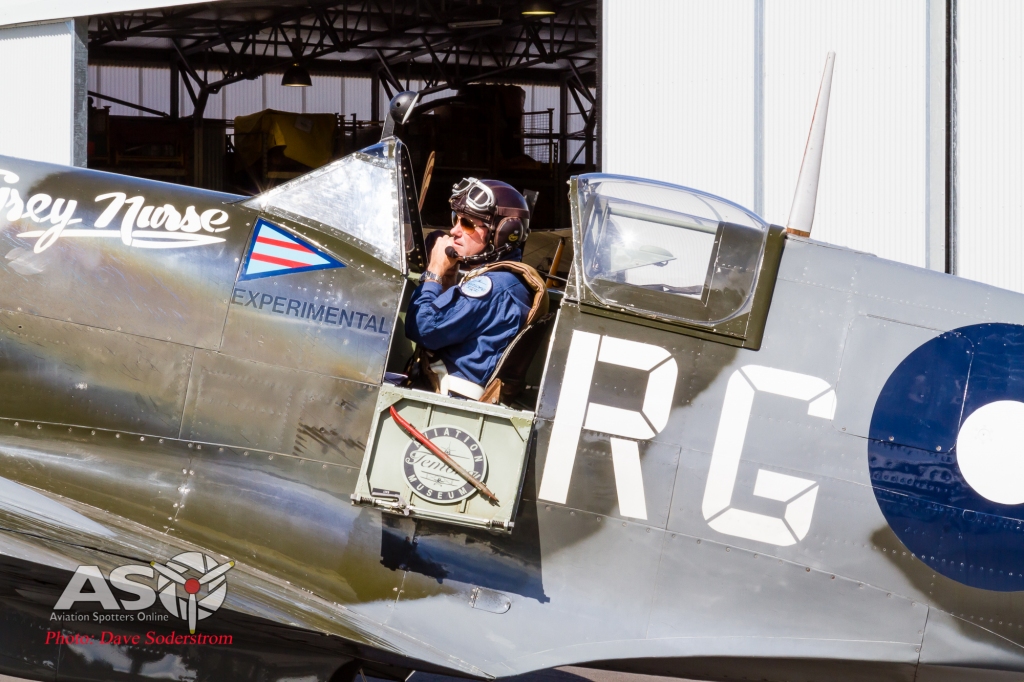


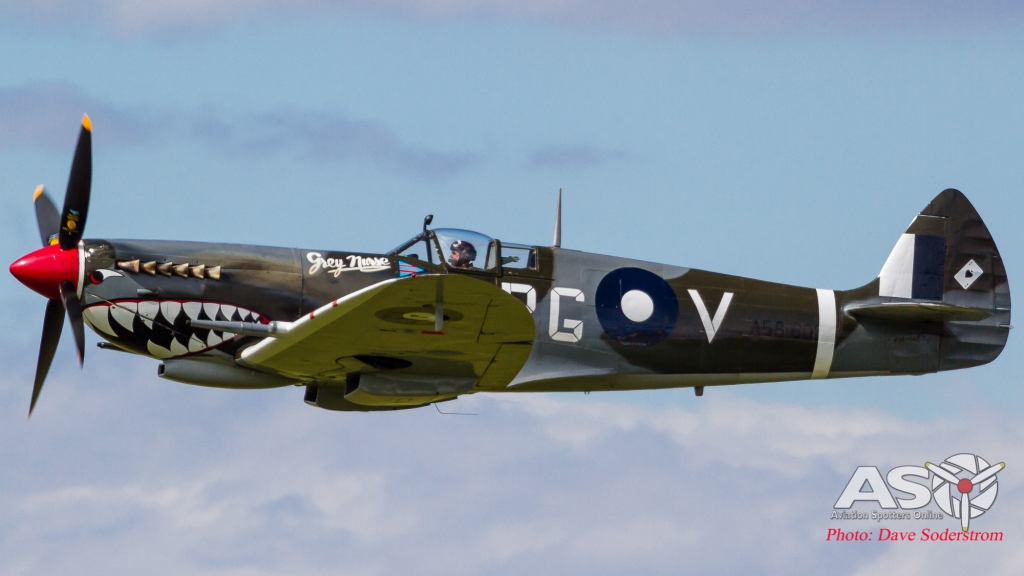
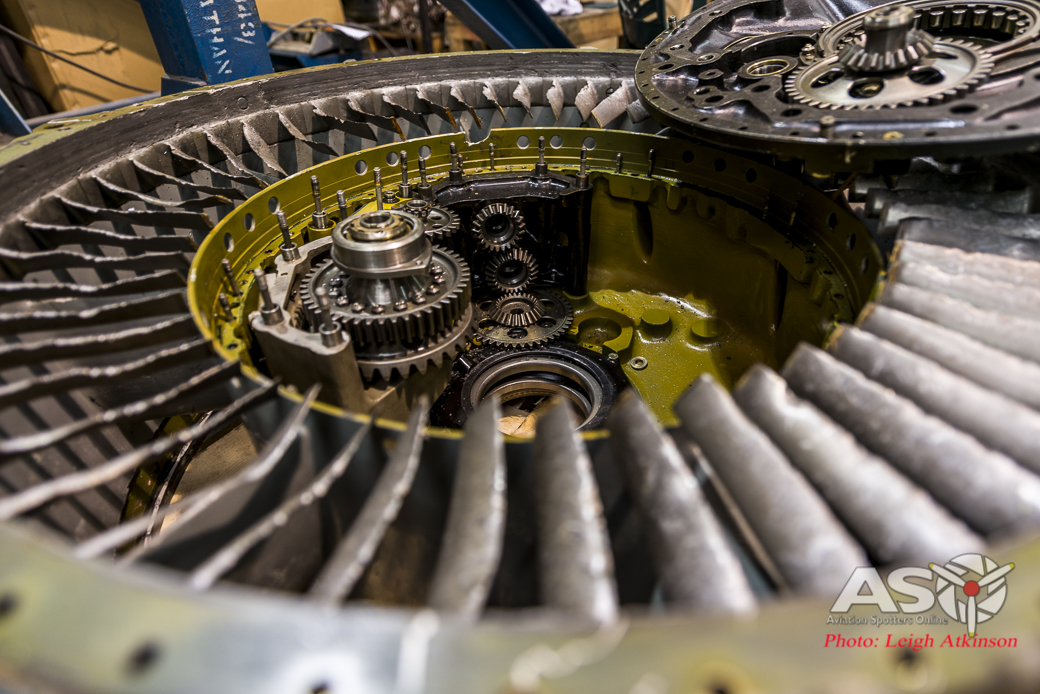







Great to see the Spit finally up after a lot of frustrations and hard work by the Museum staff. A well done credit to all concerned getting this replica built, shipped and finally mounted in Australia at the home of the origin of the RAAF. Many thanks also to TAM and Matt Hall flying down and displaying the Spit.
Thanks also to all engineers, volunteers and others who helped get the Spit to its place of pride at the Museum.
May the Museum continue and display and maintain the heritage of the RAAF.